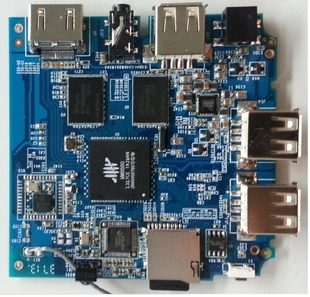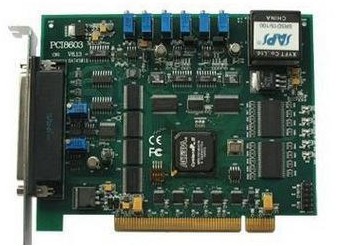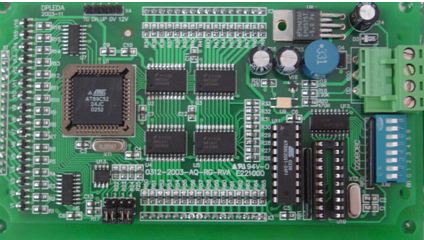
The main purpose of PCB baking is to remove moisture and moisture, and to remove moisture contained in PCB or absorbed from the outside. Because some PCB materials are easy to form water molecules.
In addition, after PCB is produced and placed for a period of time, there is also a chance to absorb moisture in the environment, and water is one of the main perpetrators of PCB popping or delamination.
Because when a PCB is placed in an environment with a temperature of more than 100 ℃, such as a reflow furnace, wave soldering furnace, hot air leveling or manual welding, the water will become steam and then expand its volume rapidly.

The faster the PCB is heated, the faster the steam expands; The higher the temperature, the larger the volume of water vapor; When water vapor cannot escape from the PCB immediately, it has a good chance to support the PCB.
In particular, the Z direction of PCB is the most fragile. Sometimes, the through hole (via) between layers of PCB may be pulled off, sometimes it may cause the separation between layers of PCB. In more serious cases, blistering, expansion, plate bursting and other phenomena can be seen even on the surface of PCB;
Sometimes even if the PCB cannot see the above phenomena on the surface, it has internal injuries. Over time, it will cause the function of electrical products to be unstable, or CAF and other problems will occur, eventually leading to product failure.
Analysis of the Real Cause of PCB Explosion and the Countermeasures
The PCB baking procedure is actually quite troublesome. During baking, the original package must be removed before it can be put into the oven. Then, the PCB must be baked at a temperature of more than 100 ℃, but the temperature cannot be too high, so as to prevent the PCB from bursting due to excessive expansion of water vapor during baking.
Generally, the PCB baking temperature in the industry is mostly set at 120 ± 5 ℃ to ensure that the moisture can be eliminated from the PCB body before the SMT line board can be used for welding in the reflow furnace.
The baking time varies with the thickness and size of the PCB. In addition, for thinner or larger PCBs, the board must be pressed with a heavy object after baking. This is to reduce or avoid the tragic occurrence of PCB bending deformation due to stress release during the cooling period after baking.
Once the PCB is deformed and bent, it will be offset or uneven in thickness when SMT prints solder paste, which will cause a large number of defects such as welding short circuit or empty soldering during subsequent back soldering.
Setting of PCB baking conditions
At present, the industry generally sets PCB baking conditions and time as follows:
1. PCB shall be baked at 120 ± 5 ℃ for 1 hour before going online if it is placed in an environment with temperature and humidity control (≤ 30 ℃/60% RH, according to IPC-1601) for more than 5 days after unpacking within 2 months of manufacturing date and is well sealed.
2. PCB shall be baked at 120 ± 5 ℃ for 2 hours before going online if it is stored for 2 to 6 months beyond the manufacturing date.
3. PCB shall be baked at 120 ± 5 ℃ for 4 hours before going online if it is stored for 6-12 months beyond the manufacturing date.
4. PCB is basically not recommended to be used when it is stored for more than 12 months beyond the manufacturing date, because the adhesive force of the multilayer board will age with time, and quality problems such as unstable product functions may occur in the future, increasing the chance of market repair, and there are risks such as board bursting and poor tin eating in the production process. If it is necessary to use it, it is recommended to bake it for 6 hours at 120 ± 5 ℃ first, and test print several pieces of solder paste before mass production to ensure there is no solderability problem before continuing production.
Another reason why it is not recommended to use a PCB that has been stored for too long is that its surface treatment will gradually become invalid with the passage of time. For ENIG, the shelf life of the industry is 12 months. After this aging, it depends on the thickness of its gold deposit. If the thickness is thin, its nickel layer may appear in the gold layer and form oxidation due to diffusion, which affects the reliability, so it should not be careless.
5. All baked PCBs must be used within 5 days, and the unfinished PCBs must be baked at 120 ± 5 ℃ for another hour before going online.
Stacking mode during PCB baking
1. When baking large size PCBs, lay them flat and stack them. It is recommended that the maximum number of PCBs in a stack should not exceed 30. Within 10 minutes after baking, open the oven to take out PCBs and lay them flat to cool them. After baking, press the anti bending fixture. Large size PCB is not recommended to be baked vertically, which is easy to bend.
2. When baking small and medium-sized PCBs, they can be placed horizontally and stacked. It is recommended that the maximum number of PCBs in a stack should not exceed 40. They can also be vertical and the number is unlimited. Within 10 minutes after baking, open the oven to take out PCBs and place them horizontally to cool them. After baking, press the anti bending fixture.
Precautions for PCB baking
1. The baking temperature shall not exceed the Tg point of the PCB, and generally shall not exceed 125 ℃. In the early days, the Tg point of some lead containing PCBs was relatively low. Now, the Tg of lead-free PCBs is mostly above 150 ℃.
2. The baked PCB shall be used up as soon as possible, and if it is not used up, it shall be vacuum packed again as soon as possible. If it is exposed to the workshop for too long, it must be baked again.
3. Remember to install ventilation drying equipment in the oven, otherwise the baked water vapor will be stored in the oven to increase its relative humidity, which is unfavorable for PCB dehumidification.
4. From the quality point of view, the fresher the PCB is used, the better the soldering quality will be. Even if the expired PCB is used after baking, there will still be a certain quality risk.
Suggestions on PCB baking
1. It is recommended to bake PCB at a temperature of 105 ± 5 ℃, because the boiling point of water is 100 ℃. As long as the boiling point is exceeded, water will become steam. Because the PCB does not contain too many water molecules, it does not need too high temperature to increase its gasification speed.
If the temperature is too high or the gasification speed is too fast, the water vapor will expand rapidly, which is actually bad for the quality. Especially for multilayer boards and PCB with embedded holes, 105 ℃ is just higher than the boiling point of water, and the temperature will not be too high, which can both dehumidify and reduce the risk of oxidation. Moreover, the oven temperature control ability has been improved a lot.
2. Whether PCB needs to be baked depends on whether its package is affected with moisture, that is, whether the HIC (Humidity Indicator Card) in its vacuum package has shown that it is affected with moisture. If the package is in good condition, the HIC can directly go online without baking without indicating that it is affected with moisture.
3. When baking PCB, it is recommended to use "vertical type" and interval baking, because this can achieve the maximum effect of hot air convection, and moisture is easier to be baked out of PCB. However, for large PCB, it may be necessary to consider whether vertical type will cause bending deformation.
4. After PCB baking, it is recommended to place it in a dry place and allow it to cool quickly. It is better to press a "anti bending fixture" on the top of the PCB board, because ordinary objects are easy to absorb moisture from the high heat state to the cooling process, but rapid cooling may cause plate bending, which needs to achieve a balance.







